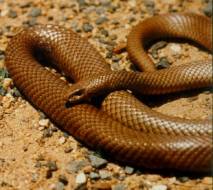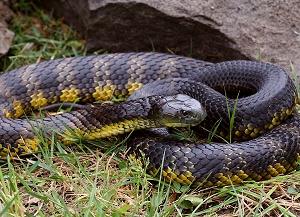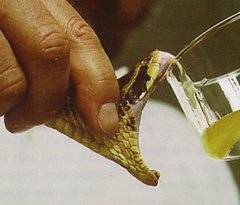Brown Snake Envenomation
/First Aid for brown snake envenomation is pressure-immobilisation
Brown snake is widespread outside urban areas, and particularly common around buildings in rural environments. The group is the most important in terms of fatalities, being responsible for more deaths in the last twenty-five years than any other group. The fact that brown snakes are very fast-moving also adds degree to the danger they present. While all snakes are generally variable in appearance, brown snakes are remarkably so, leading to possible problems with identification.
Among the toxins contained in their venom is a very potent presynaptic neurotoxin, one of the strongest of toxins found in snakes. The venom also contains a postsynaptic neurotoxin and a procoagulant. Unlike the venom of most dangerous Australian elapids, that of brown snakes has littles or no myolytic activity.
Signs and Symptoms
Early collapse, a few minutes after the bite, is not infrequent in cases of brown snake envenomation, possibly due to haemostatic disturbance resulting from coagulopathy. Bloods will typically indicate prolonged clotting times. Thrombocytopenia is also evident from haematology. One diagnostically distinct feature of brown snake enevenomation is the absence of rhabdomyolysis, which in cases involving other species manifests as myoglobinuria. Coagulopathic effects can also result in disseminated intravascular coagulopathy, putting the patient at risk of cerebrovascular accident.
Treatment
 First aid for brown snake envenomation consists of a pressure bandage and immobilisation. In cases where a pressure bandage has been applied correctly, it can be left in situ indefinitely while the patient is feeling no discomfort as a result. If it becomes appropriate to remove a pressure bandage, it is necessary to have antivenom and haemostatic support ready. In severe cases, a patient may require ventilatory support.
First aid for brown snake envenomation consists of a pressure bandage and immobilisation. In cases where a pressure bandage has been applied correctly, it can be left in situ indefinitely while the patient is feeling no discomfort as a result. If it becomes appropriate to remove a pressure bandage, it is necessary to have antivenom and haemostatic support ready. In severe cases, a patient may require ventilatory support.
Brown Snake Antivenom
It is generally accepted that the initial treatment for syptomatic brown snake envenomation involves administration of two ampoules of monovalent Brown Snake Antivenom. Brown snake antivenom supplied by CSL Ltd is equine in origin.












